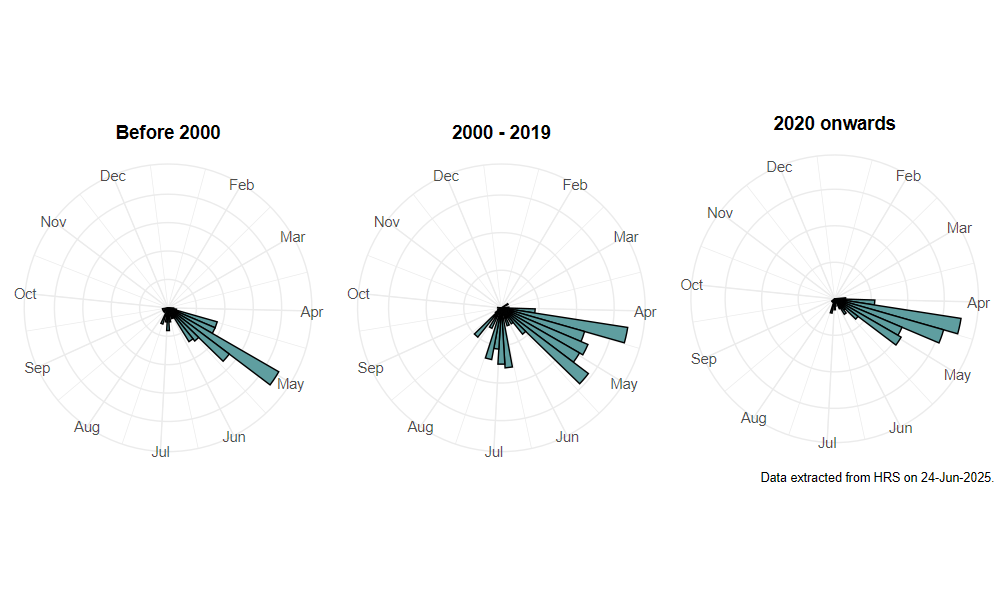Meligramma trianguliferum (Zetterstedt, 1843)
Identification
Identification difficulty = 4. ![]()
![]() according to Ball & Morris, 20241
according to Ball & Morris, 20241
Synonymy
Syrphus triangulifer Zetterstedt in Coe(1953)2, Melangyna triangulifera (Zetterstedt) in Stubbs & Falk (1983)3.
Biology
The larva, which is convincingly camouflaged as a bird dropping (see photograph in Rotheray, 19934), feeds on a range of aphids on trees, especially fruit trees and shrubs. Generally found around trees along woodland rides and edges or amongst scrub, including isolated patches of scrub on heathland and moorland. Adults appear elusive and may be arboreal, but can be found visiting flowers, especially white umbels.
Flight period
The following plots show the number of unique records per week excluding those reported to be of immature stages.

Status
Listed as 'Notable' by Falk, 19915, but Ball & Morris, 20146 dropped it from this status and regard it as LOWER RISK.
Distribution
Scarce but widely distributed in England, with a tendency to be more frequent in the south. There are very few, widely scattered records in northern England, Wales and Scotland.

Trends
The following plots show the Frescalo TFactor vs year and a map of the rescaled frequency (all records) for the species.
-
Ball, S., & Morris, R. (2024). Hoverflies of Britain and Ireland. WILDGuides (3rd ed.). Oxford: Princeton University Press. ↩
-
Coe, R. (1953). Diptera: Syrphidae. Handbooks for the Identification of British Insects, 10(1), 1–98. ↩
-
Stubbs, A., & Falk, S. (1983). British Hoverflies: An Illustrated Identification Guide (1st ed.). Reading: BENHS. ↩
-
Rotheray, G. (1993). Colour guide to hoverfly larvae (Diptera, Syrphidae) in Britain and Europe. Dipterists Digest (first series), 9, 1–155. ↩
-
Falk, S. (1991). A review of the scarce and threatened flies of Great Britain. ( No. 39). Research and Survey in Nature Conservation (pp. 1–194). Peterborough: NCC. ↩
-
Ball, S., & Morris, R. (2014). A review of the scarce and threatened flies of Great Britain. Part 6: Syrphidae. ( No. 9). Species status (pp. 1–130). Peterborough: JNCC. ↩